Lead generation is crucial for any business. If you have quality leads, you can drive large volumes of sales from your future promotional campaigns.
Now, there are several ways to collect leads.
You’ve probably heard of using squeeze pages where you offer a free valuable resource in exchange for email addresses. While this is a great tactic, sometimes people are skeptical and refrain from opting in.
However, there is another lead generation tactic that has a higher conversion rate if your resource is truly valuable – the reverse squeeze page funnel.
According to Justin Brooke, a reverse squeeze page funnel has the ability to surge your conversions by up to 85%!
For businesses dealing in premium products or high-ticket services, this is a great strategy to incorporate.
Today, you will learn how you can create and use a reverse squeeze page funnel effectively.
This article will help you learn
- What a reverse squeeze page funnel is,
- When should you use a reverse squeeze page, and
- How you can create a reverse squeeze page funnel in WordPress
And eventually, you will be able to plan your next lead generation campaign using this exclusive tactic.
Let’s dive in.
What Is A Reverse Squeeze Page?
Let’s start with the basics first.
You must have come across websites that ask for your email address so you can get a free e-book or a discount. That’s a squeeze page – they’re trying to get, or “squeeze,” information out of you.
Now, imagine this flipped around. Instead of asking for your info up front, you get partial access to useful content for free (without anything from you at all) – like an actionable guide or a useful video resource. Once you have found some value, you can then opt-in to get further/full access.
This is a classic case of a reverse squeeze page.
Let’s look at an example.
Suppose you are a financial advisor. You made a video on “5 Simple Ways to Save Cash.” This is something most people will love to watch.
Once viewers have learned some valuable tricks, at the end of the video, you may add a quick teaser on what you have in store in your next video, “The Personal Money Growth Strategy!” along with a message, “Sign-up now to get free access to my next 3 financial lessons!“
People who found your 1st video useful and are curious about what value they may get from the second video will sign up.
More reasons why a reverse squeeze page is a winning strategy
- Gain Authoritative Trust
You have proven how helpful you can be even before asking for anything in return. This will help you gain authority and trust.
- No Rush Or Obligation
People don’t feel pushed or obligated to take action. This increases the sense of security and respect for your efforts.
- Value-added Experience
Since the approach gives value to users right away, they appreciate your expertise and often are eager to follow you for future content.
- Identify Real Interest
After getting the initial value, people who sign-up have a genuine interest. This means they are likely to be interested in your offer as well, i.e., qualified leads.
But you need to choose the types of content wisely that you want to use for this strategy. Here are some ideas below-
Type Of Contents To Work With For A Reverse Squeeze Page Funnel
First off, any content you want to use as a lead magnet has to be something useful for your target audience. However, not all types of content are suitable for reverse squeeze pages, even if you have a good resource to offer.
Following are a few types of content that you may focus on when creating a lead magnet for your reverse squeeze page funnel.
1. Value-Added Videos
The best content to work with is videos. Tutorials or instructions on good topics are great content to use for reverse squeeze pages.
The way it works is you give an initial video for free. After they watch the video, they have a chance to sign-up to watch more videos that comes after that.
For example, suppose you are an SEO expert. You can create a page where you embed a video on “Website audit for SEO” to cover a few basic fundamentals of finding out SEO gaps in a site.
Then, at the end of the video, you inform them that in the next video, you will discuss 2 crucial SEO optimizations that can have a high impact on the domain authority. Ask them to read the section below the video to get access to his next 3 videos on SEO.
Below the video, you add a 2-column section. On the left column, you include Preview images of the next 3 videos you have in store, along with bullet points to mention what you will cover in those videos. And on the right column, add a CTA to “Sign-up for Free Access” along with a quick opt-in form. to collect names and emails.
That’s it. If people find your first video valuable, they will surely sign-up for the rest.
2. Partial Preview Of Blogs/Articles/Guides
Often people seek detailed guides or high-value knowledge online, and in most cases, the available content is vague. You can leverage this scarcity of good content by creating an article that’s actually of high quality.
But, instead of leaving it out in the open, you may initially provide partial access to the article while barring the remaining portions for people who opt in.
Suppose you wrote a detailed article on “10 Steps To Successful Email Marketing – Detailed Step-by-Step Guide.”
What you can do is you can allow people to view up to the 3rd step. And then keep an opt-in form where they have to sign-up to unlock the rest of the article.
By the time a reader gets to your 3rd step, they will have already found value and got curious to read the whole thing. Hence, many will opt-in to gain access to the rest of the content.
This approach mostly works for documentaries, advanced guides, research articles, and statistical articles.
4. Course Lessons
This one is one of the most popularly used approaches to get more enrollments into courses.
Basically, you create a course with 3-5 lessons. Give free access to the 1st lesson and ask to enroll to get free access to the rest of the lessons.
For example, suppose you are creating a course on “Improving Programming Code Structure,” and you have 7 lessons for it:
– Coding Standard
– Test Automation
– Version Control
– Code Refactoring
– Efficient Code Reviews
– Code Synx Checker
– Community Collaboration
You allow people to watch the 1st lesson. The rest of the lesson previews can be visible, but people will not get access to watch the lesson videos. Then, below the course, you add a CTA “Enroll for Free to watch all the lessons.”
This helps to get a lot of enrollments if your course description is good and the course really serves to solve a major pain point for your target audience.
4. Short Cliffhangers
If you are an author or have written any books, then using short cliffhangers can be a good approach.
Let’s say you wrote a short book about how “John Doe” turned a $2000 monthly income into a million-dollar business.
You could create a summarized version of an interesting chapter of the book where you speak about the experiments “John Doe” was conducting and what he was learning from each attempt.
Suppose in the selected chapter of the book, “John Doe” fails in several experiments until he finds a breakthrough. So in the cliffhanger, you will include up to the last experiment that failed. And then create suspense about the one that actually worked. For example, near the end, you state, “…he finally got a breakthrough. He couldn’t believe his eyes! He actually got a working method that generated 3 times the revenue!”
Now, the readers will be excited. They will be eager to find out what John managed to discover.
You then add a simple opt-in form with the message, “What did John do? What was it that got him such high results? You may read all about it for FREE. Simply sign up here.”
This almost always works.
You may even use this technique to sell your books rather than collect leads.
5. Free Chapter (for ebooks)
You could host the 1st chapter of your ebook on your website and ask people to register to gain access to the complete ebook.
For example, suppose you are a fitness instructor, and you wrote a short ebook on Dient plans that has 5 chapters. You could allow people to read the 1st chapter for free, similar to any blog or article.
Then, after the chapter ends, add a button, “Read Chapter 2.” Upon clicking, a pop-up will appear asking the person to opt-in to get the ebook sent to his email.
It is a great approach if your lead magnet is an ebook.
Other types of suitable content
Apart from the 5 popular ones above, there are a few more:
- Stats & Infographic
- Podcast episodes
- Detailed case studies
- Slideshows & Presentations
- Free Webinars & Bootcamps
- Interesting audiobooks
- High-value interviews
- Actionable checklists
When Should You Use A Reverse Squeeze Page?
You should only use a reverse squeeze page funnel when you are looking for quality leads or when you are trying to position yourself as an industry expert.
Normally, a squeeze page gives you a targeted audience. But there is no guarantee that they will use your free resource or will actually be interested after reading your resource.
A reverse squeeze page allows the prospect to get value first before opting in, which means, they know exactly what they are signing up for and are interested to learn more. It’s an indication that they are likely your potential clients who may respond well to your promotional emails later.
This will also mean you may get fewer leads than a regular squeeze page. But the leads will be of higher quality with fewer fake emails.
Also, businesses with long sales cycles, high-ticket services, or new releases may get good benefit from using reverse squeeze pages.
Who Can Use A Reverse Squeeze Page Funnel?
Following are some of the industries (and the lead magnets they may offer) that can use a reverse squeeze page funnel to get high ROI.
- Consultants and Coaches
- Free webinars, video series, or downloadable guides.
- Service-Based Businesses
- High-quality case studies, success stories, or comprehensive reports.
- Educational Institutions
- Free mini-courses, sample lectures, or valuable educational resources.
- Health and Wellness Professionals
- Free meal plans, workout routines, or wellness tips.
- Authors and Thought Leaders
- Exclusive content previews such as book excerpts, insightful articles, or recorded talks.
- Creative Professionals
- Free design templates, photography tips, or creative inspiration.
- Event Planners
- Event planning guides, checklists, or success stories.
- Travel Agencies
- Destination guides, travel itineraries, or travel tips.
- Technology Startups
- Informative content related to emerging technologies, industry trends, or problem-solving strategies.
- Health and Beauty Brands
- Skincare routines, beauty tips, or wellness resources.
- Legal Professionals
- Legal guides, FAQs, or case studies related to common legal issues.
- Marketing Agencies
- Fee marketing audits, strategy templates, or social media guides.
- DIY and Home Improvement Businesses
- Step-by-step tutorials, project plans, or home improvement tips.
- Environmental Health Organizations
- Guides on solar panel installation, energy-saving tips, or environmental impact reports.
- B2B Service Providers
- In-depth industry reports, specialized whitepapers, or actionable case studies
Business That Should Not Use A Reverse Squeeze Page Funnel
Some businesses may not get enough ROI from reverse squeeze pages. Hence, if you are one of the businesses below, you shouldn’t use this strategy.
- E-commerce Stores with Impulse Purchases
Businesses selling low-cost or impulse-buy products might not benefit as much from a reverse squeeze page, as customers might be more focused on making quick purchases rather than engaging with extensive content.
- Emergency Services or Urgent Solutions
Industries like emergency locksmiths, urgent medical services, or roadside assistance are better served by providing immediate contact information and solutions rather than delaying engagement with a reverse squeeze page.
- Retail Businesses with Frequent Shoppers
Retail stores with frequent shoppers may not need to build as much pre-engagement before offering deals or discounts, as their customer base already has a buying relationship with the brand.
- Local Services with High Demand
Businesses like local restaurants, salons, or repair services that are in high demand within the local community might not require a reverse squeeze page, as their customers often prioritize convenience and proximity over extensive content engagement.
- Low-Involvement Consumer Products
Businesses selling everyday consumer products with low involvement, such as cleaning supplies or basic household items, may not see substantial benefits from a reverse squeeze page, as the value proposition is straightforward and doesn’t require extensive trust-building.
Step-by-Step Guide On Creating A Reverse Squeeze Page Funnel In WordPress
Now, let us learn how you may use a reverse squeeze page funnel in your WordPress site.
In this guide, we will use a few tools that you can easily get.
Tools Required To Create A Reverse Squeeze Page Funnel
- WPFunnels
Reliable funnel builder that will allow you to craft the reverse squeeze page funnel (with opt-in form).
- Elementor
Visual page builder to design the pages.
- Mail Mint
An email marketing automation tool to create email automation after opt-in.
Creating The Reverse Squeeze Page Funnel
You will need to follow the steps below to craft a good reverse squeeze page funnel.
- Create A Two-Step Reverse Squeeze Page Funnel
- Setup automation to send access to the additional resources after opt-in
- Generate Traffic Using Paid Ads, Social Media, and Collaborations.
Let’s take an example.
Suppose you’re running a marketing agency. You’ve crafted a 4-part video series unveiling the secrets of a successful digital marketing strategy. On your reverse squeeze page, you could showcase the first video, ‘Lesson 1: The Fundamentals of Digital Marketing’. If prospects are impressed by this initial insight, they’d be eager to share their email, anticipating the deeper dive in the subsequent four videos you’ll be sending their way.
Step 1 – Create A Two-Step Reverse Squeeze Page Funnel
Here we will use WPFunnels to create the reverse squeeze page & the thank you page and Mail Mint to run the automation campaign.
1. Go to WPFunnels and create a funnel using a lead funnel template.
Create a new funnel.

Choose one of the lead funnel templates and import.
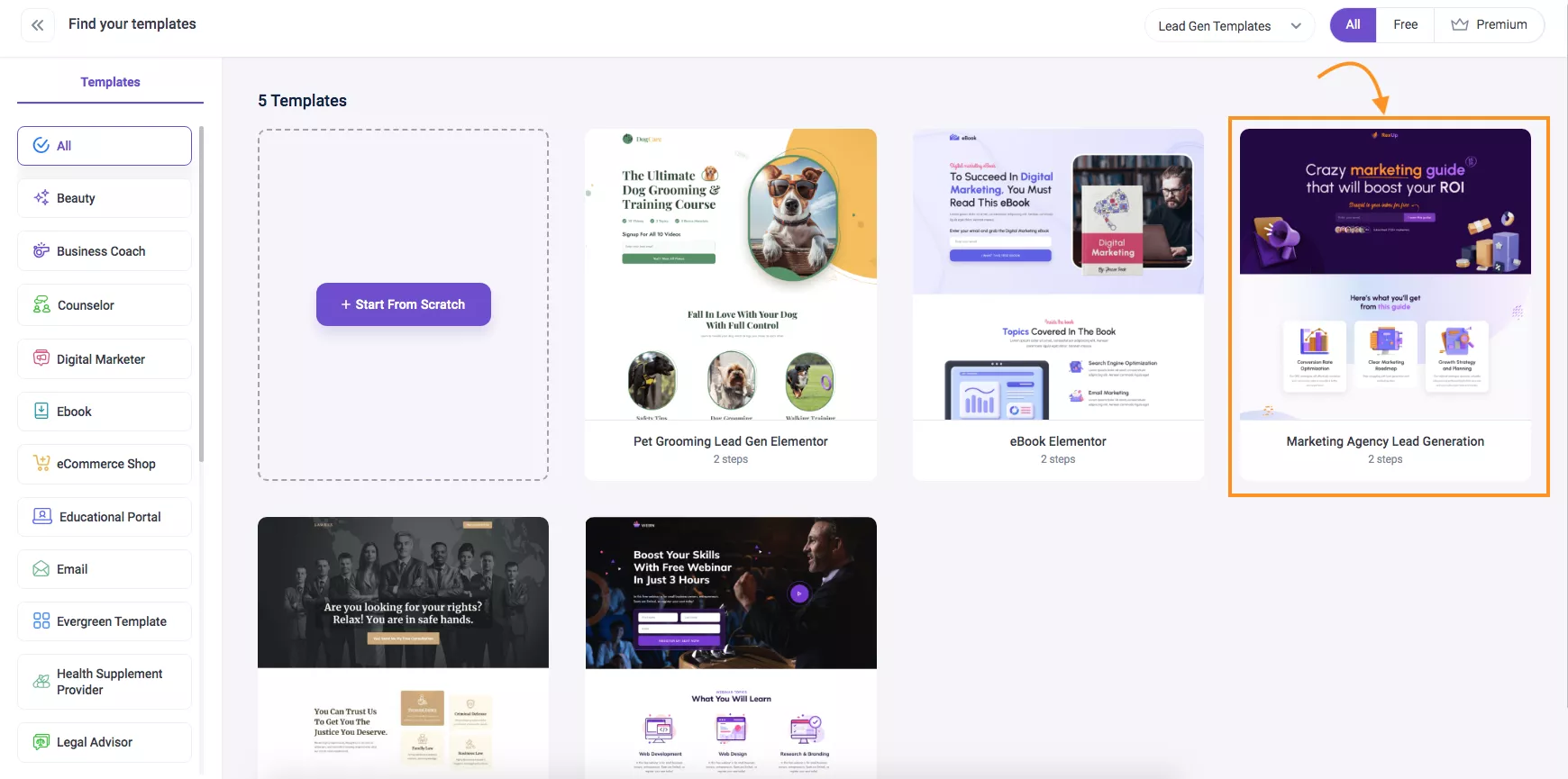
It will import the 2 steps with pre-designed pages on a visual canvas.
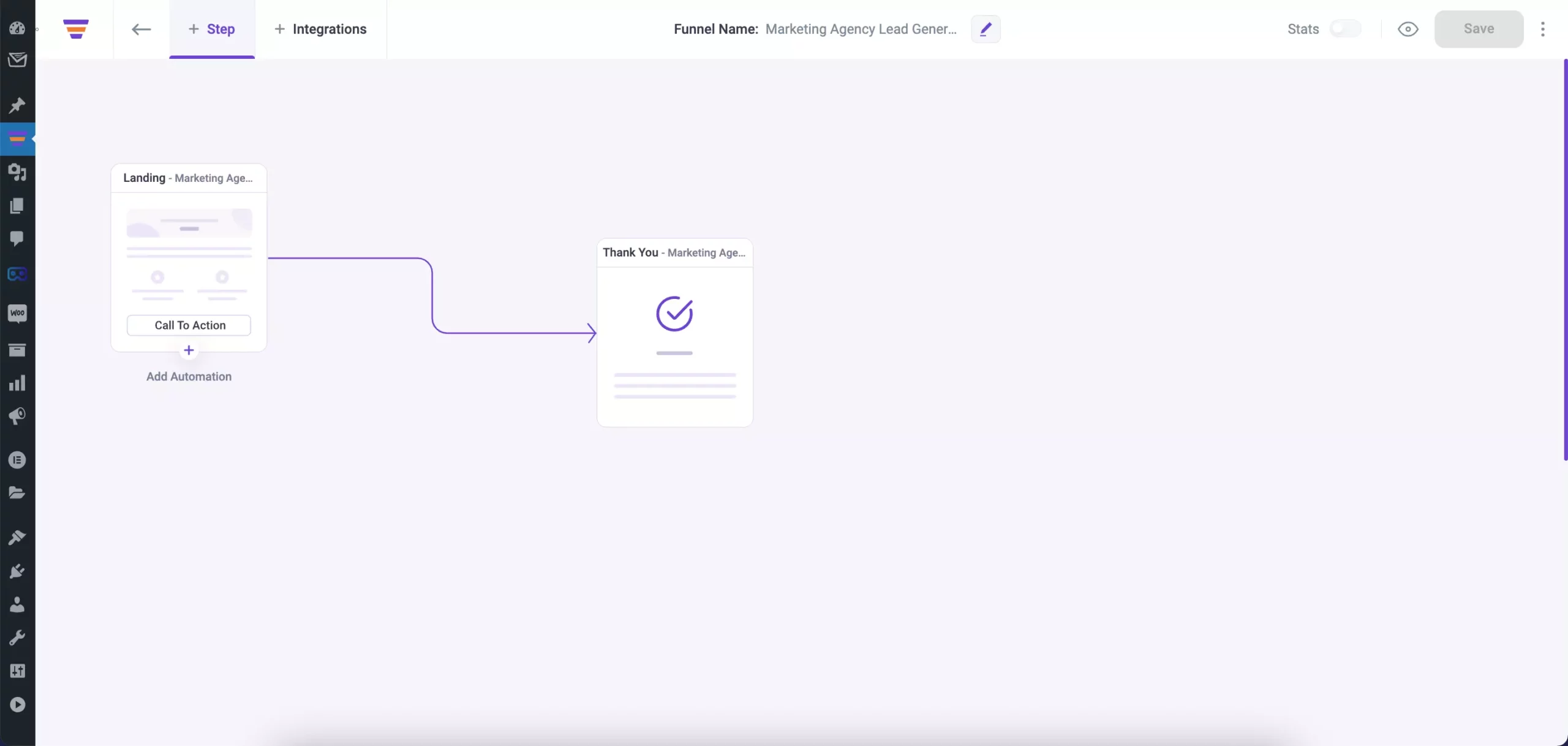
2. Customize the Landing Page to offer your free resource.
Select the landing step and click on edit.
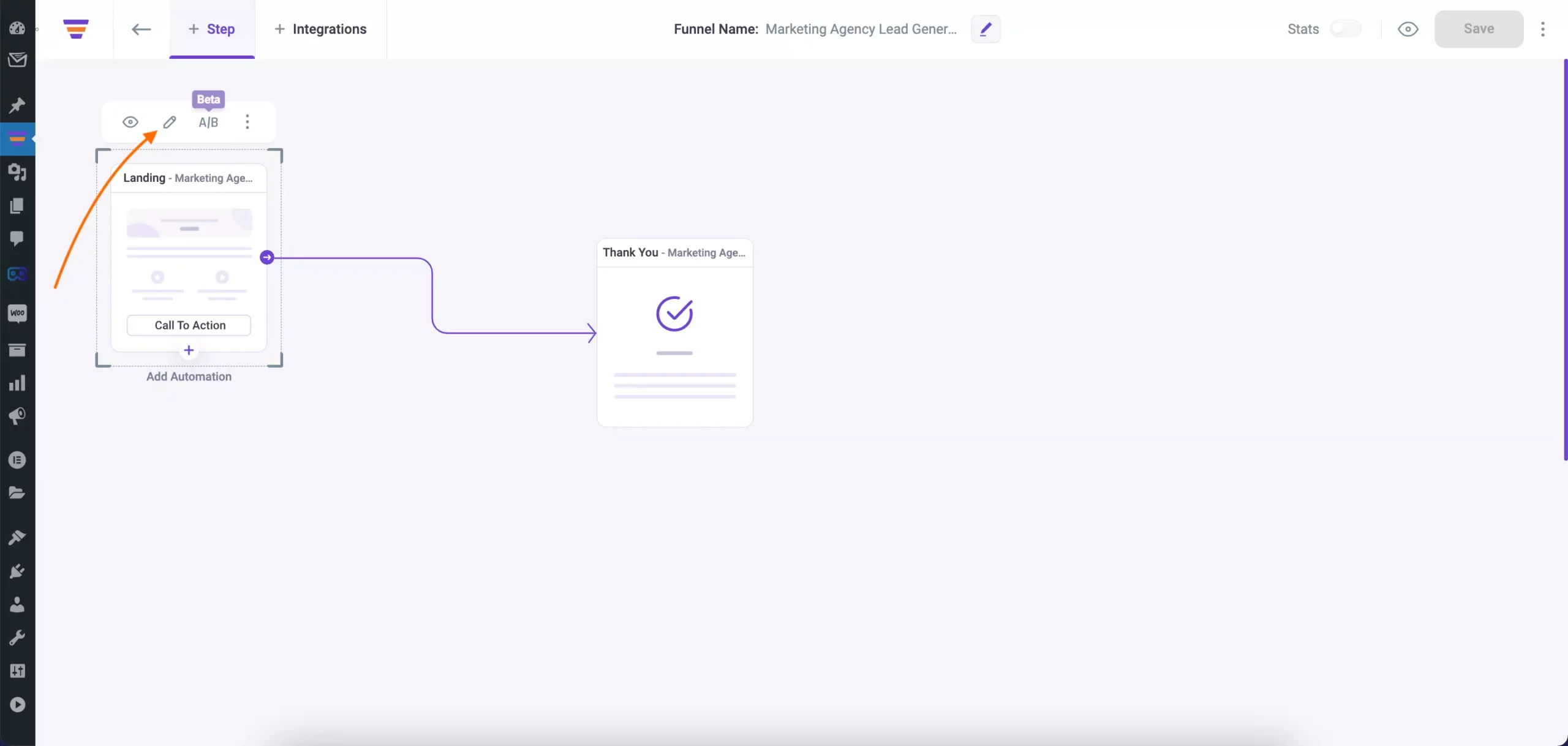
It will open the page in Elementor edit mode.
Here, embed the 1st video.
3. Set up an opt-in to gain access to the rest of the videos.
Below the video, place an opt-in form with the message, “Watch the next 4 episodes for FREE.”
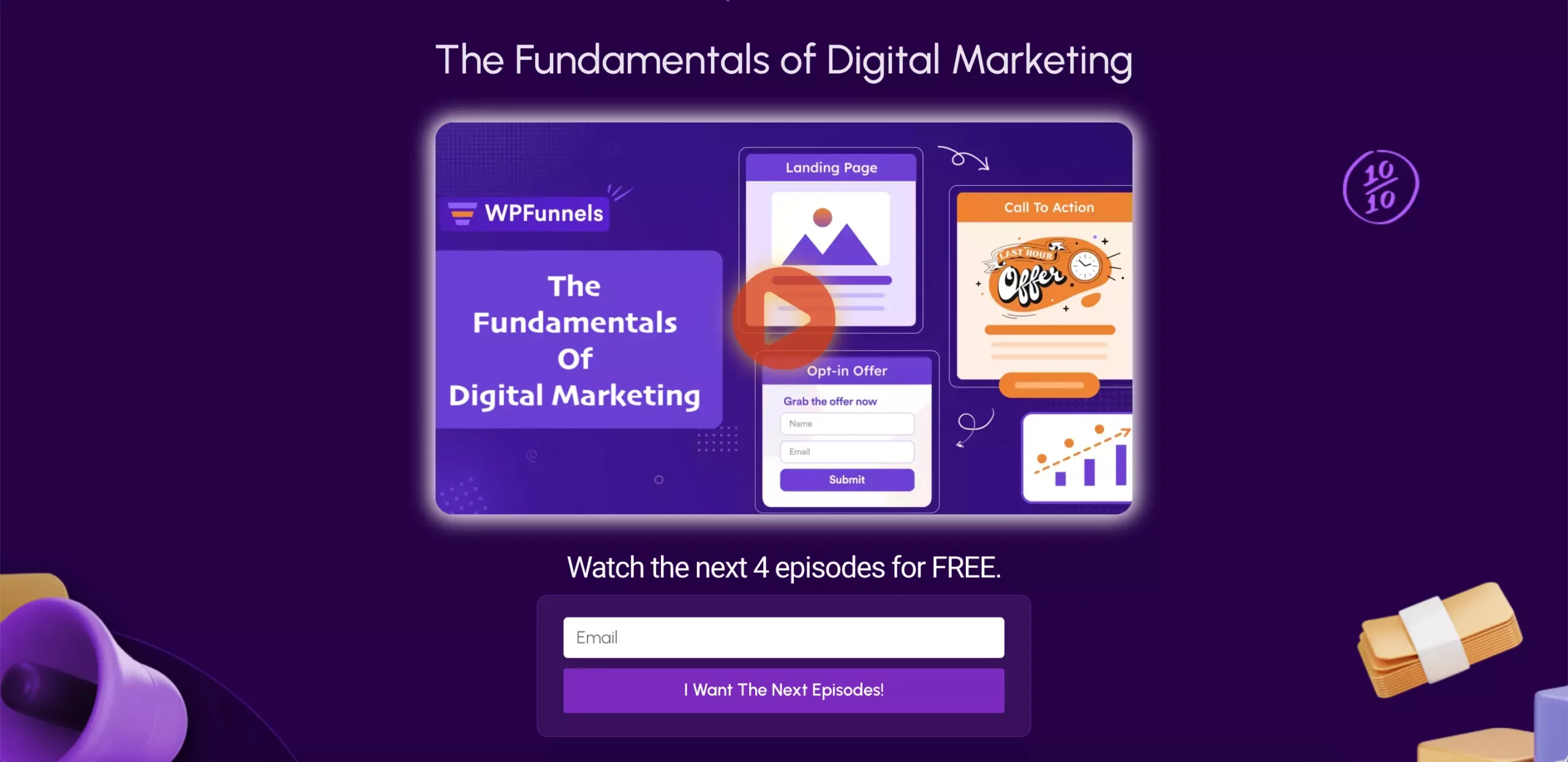
**You will find the opt-in form widget by WPFunnels in the template or in the Elementor widgets list.
Once you are done, Update the page.
4. Edit & design the Thank You Page.
Go to the visual canvas, select the Thank You Step, and edit it.
You may design it with instructions on how they will get to view the rest of the videos.
In this case, we will email them the link to view the rest of the videos.
5. Prepare the other content that you promised access to after opt-in
Create a page on your site. There, embed the rest of the video in order (top to bottom) with proper heading and a short description before each video. This is the resource page you will send when people opt-in.
Here’s an example of how it may look like.

Make sure this page is not found in your website menus or via search. You may also “no index” it until your campaign is over.
Step 2 – Setup Automation To Send Access To The Additional Resources After Opt-in
WPFunnels Pro and Mail Mint Pro have a special integration that allows you to set up email automation on the visual canvas.
Below the landing step, click on the plus (+) icon and choose “Delay.”
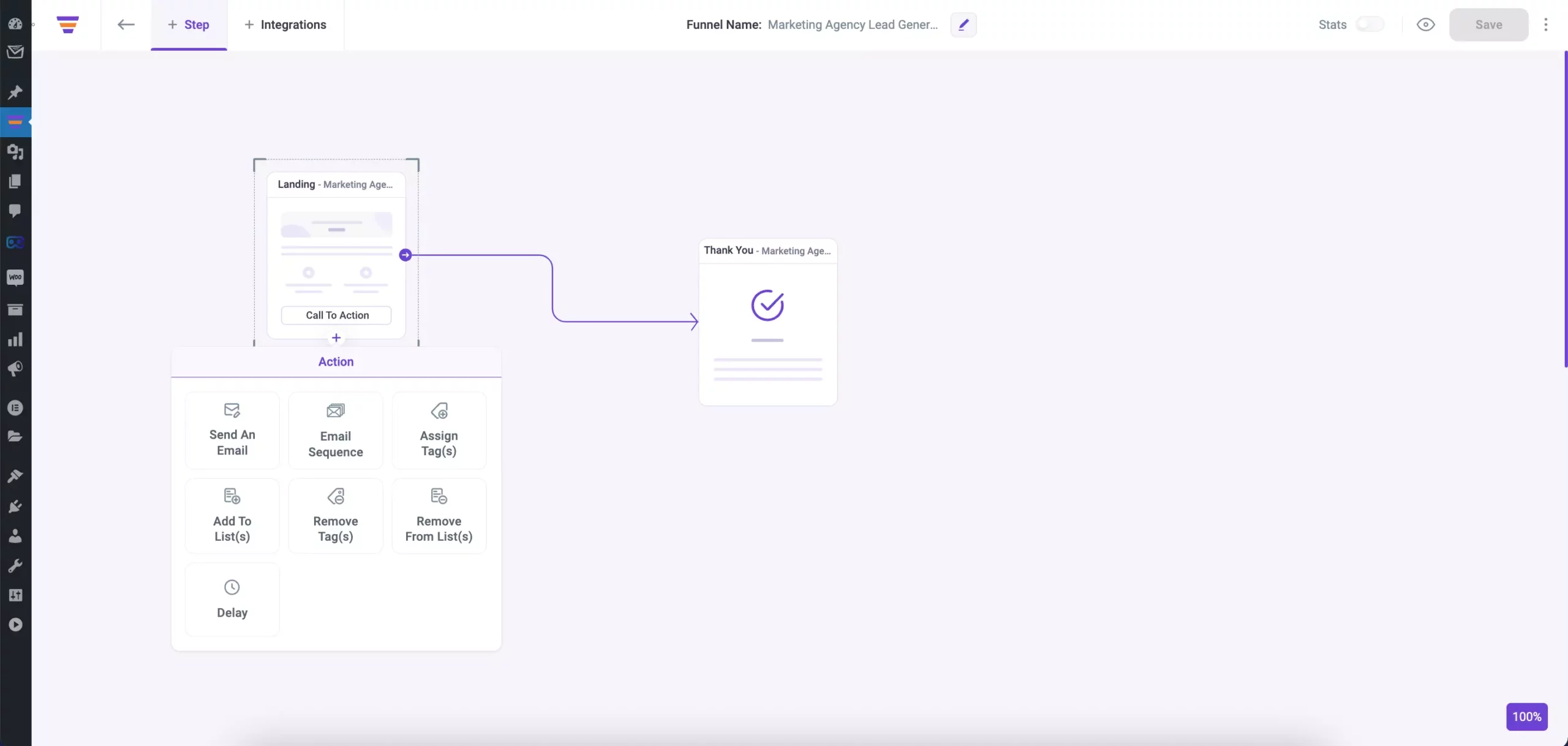
Select the Delay action and click on the edit icon.
Here, set the condition to “Opt-in is Submitted.”
Then set the delay time to 1 minute.
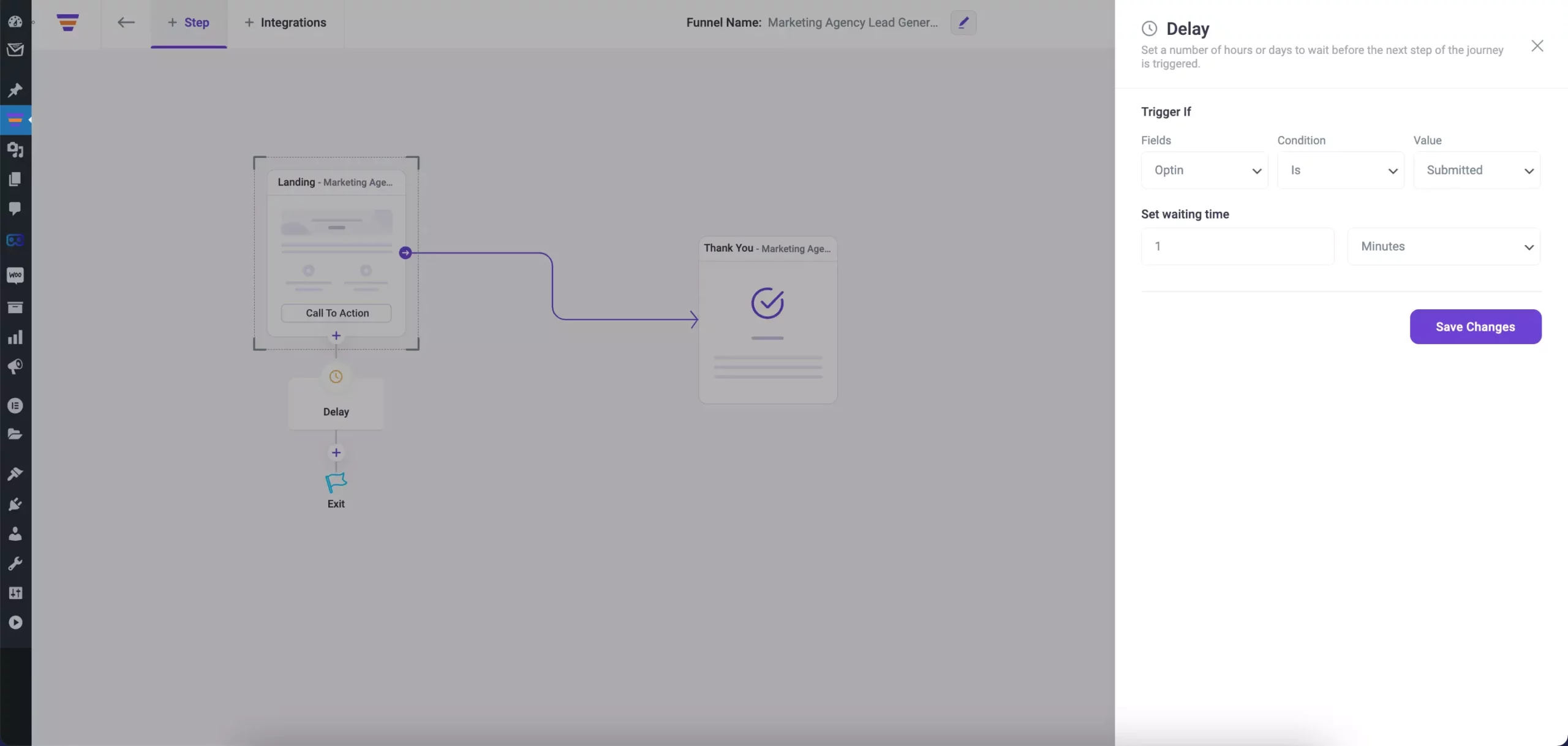
Next, click on the plus (+) icon below the Delay action and choose choose “Add to List.”
Edit the Add to List action and assign a list you have in Mail Mint so that you get the lead.
And finally, click on the plus (+) icon below the Add to List action and choose Send an Email.
Edit this action, and here, you may design your email. Make sure to link to your promised resource page in the email CTA button.
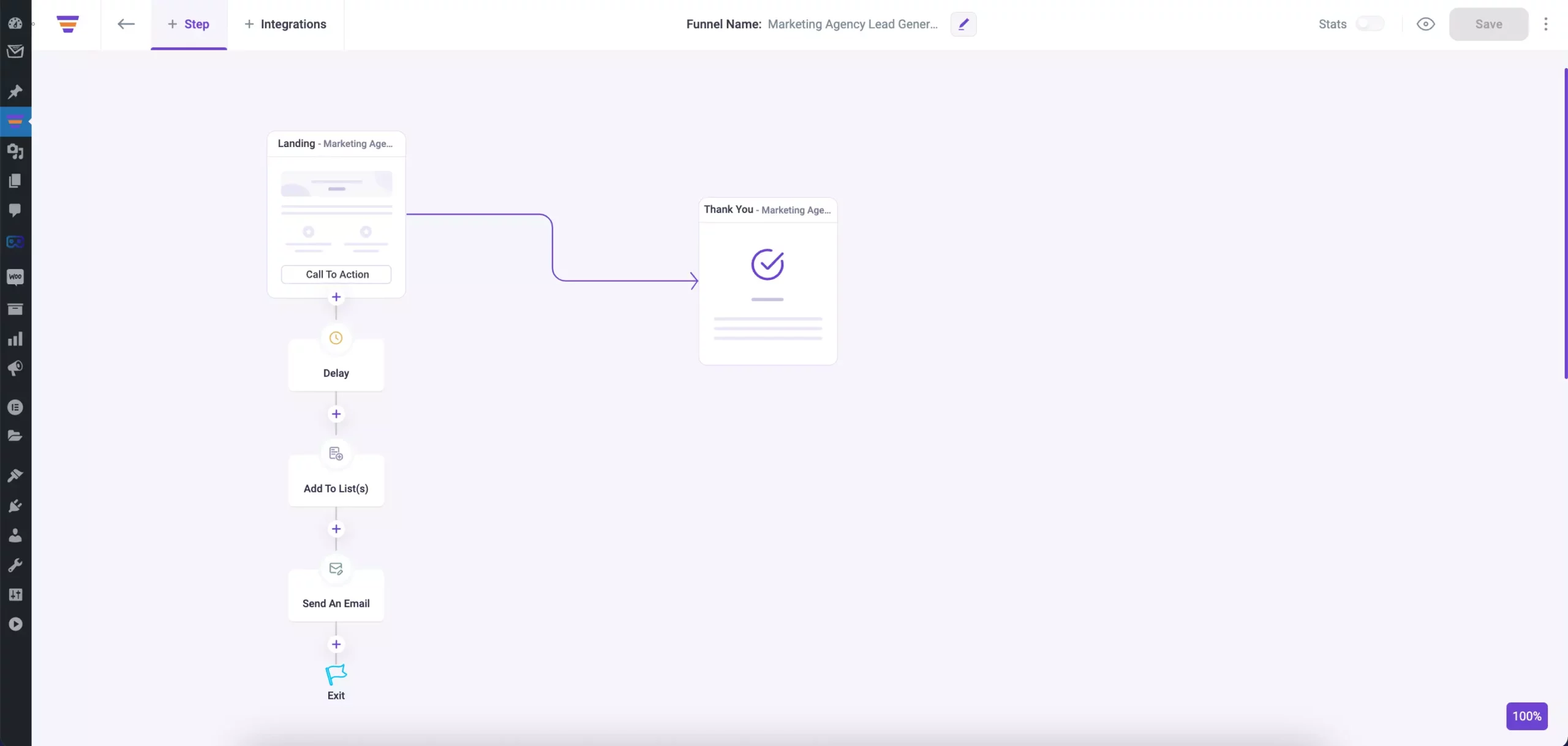
And that’s it. Your reverse squeeze page funnel is ready.
Step 3 – Generate Traffic Using Paid Ads, Social Media, And Collaborations
Now, it’s time to drive traffic to your reverse squeeze page.
You may run paid Ads on Facebook and share your page on social media.
Plus, you may request the group admins of certain Facebook groups, where you think your target audiences are available, to share your funnel page as a free resource. This often works quite well.
Overall, the more traffic you generate, the higher the chances of landing more quality leads.
What Do You Do Next?
Well, since you are now going to get a lot of leads, you shouldn’t leave it like that. Create a lead nurturing automation and tie it to exclusive sales funnels to make your core offers to these leads.
Even if they are qualified, if you wait too long before communicating with them, they may forget about you and, in turn, not convert. So you need to ensure you have a plan before you start driving traffic into your funnel.
Conclusion
As you learned, creating a reverse squeeze page funnel is quite easy in WordPress, and it has the potential to help you generate quality leads.
But remember that the success of a reverse squeeze page will depend on the quality of the resource you offer. So make sure what you are offering is really valuable – something your target prospects will find useful or interesting.
So go ahead and start planning on how you may use this strategy to grow your business.
WPFunnels is a reliable WordPress plugin that allows you to easily create any lead generation or sales funnels. As you saw in the guide, you can easily craft a high-quality reverse squeeze page funnel using this plugin. So go ahead and build your own reverse funnel system and grow your business.

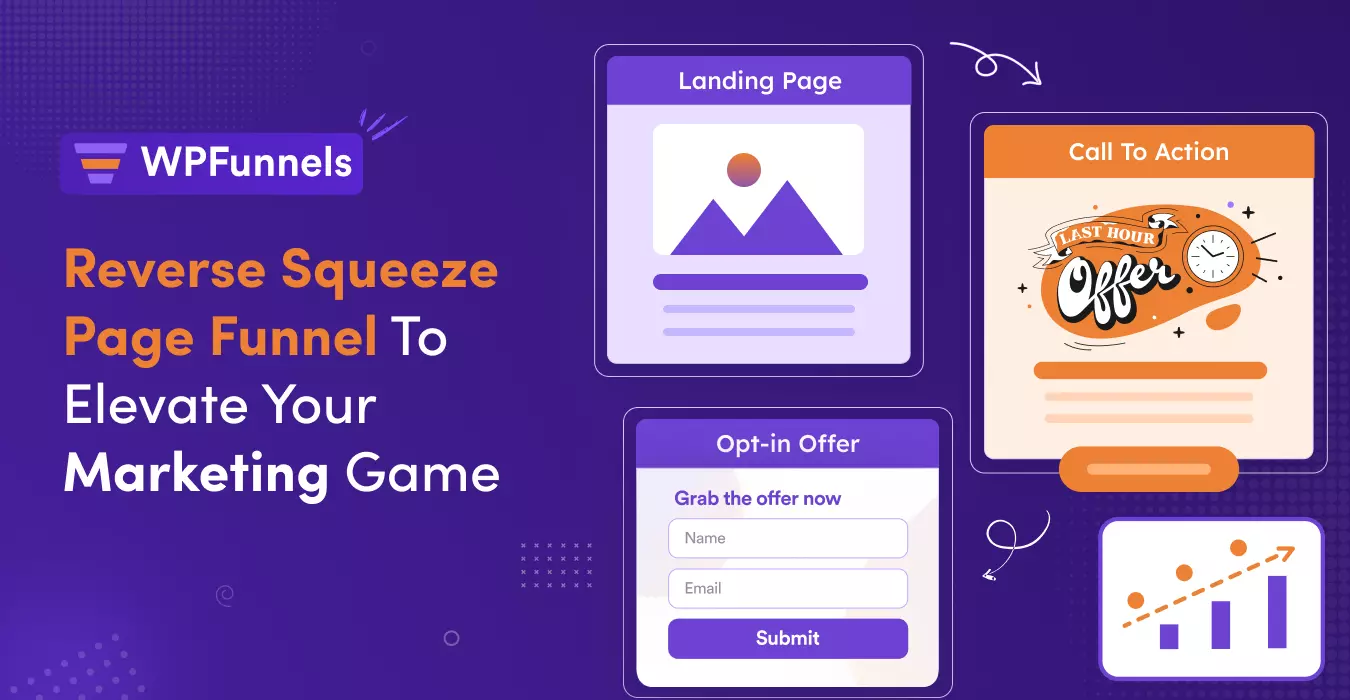
![Top Lead Generation Landing Page Ideas for Your Business [2024] 11 Top Lead Generation Landing Page Ideas for Your Business](https://getwpfunnels.com/wp-content/uploads/2024/01/Top-Lead-Generation-Landing-Page-Ideas-for-Your-Business.webp)
![10 Compelling Lead Magnet Ideas To Get More Leads [2024] 12 Compelling Lead Magnet Ideas](https://getwpfunnels.com/wp-content/uploads/2023/10/Compelling-Lead-Magnet-Ideas.webp)
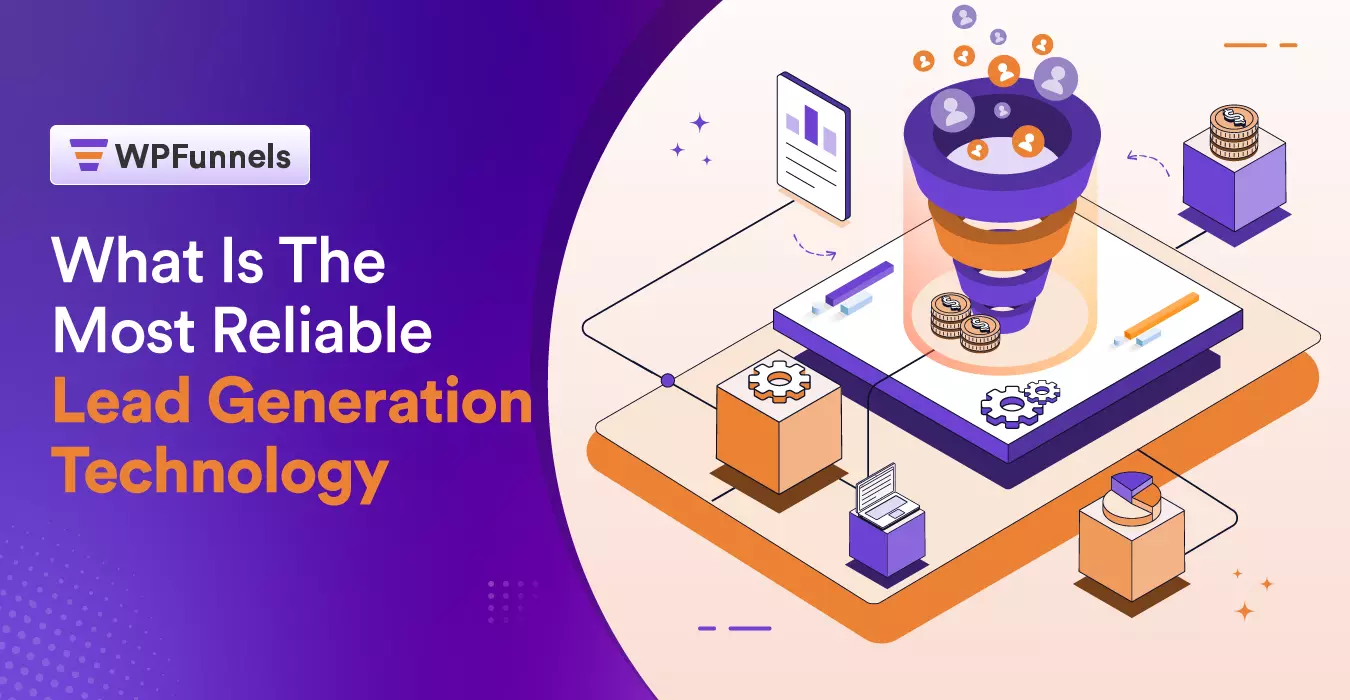

![How to Craft A Compelling Newsletter Landing Page That Works [2024] 15 How to Craft A Compelling Newsletter Landing Page That Works [2023]](https://getwpfunnels.com/wp-content/uploads/2023/12/How-to-Craft-A-Compelling-Newsletter-Landing-Page-That-Works.webp)
![15+ Attractive Email Popup Examples To Grow Your Leads List [2025] 16 email popup examples](https://getwpfunnels.com/wp-content/uploads/2023/09/email-popup-examples-1.webp)